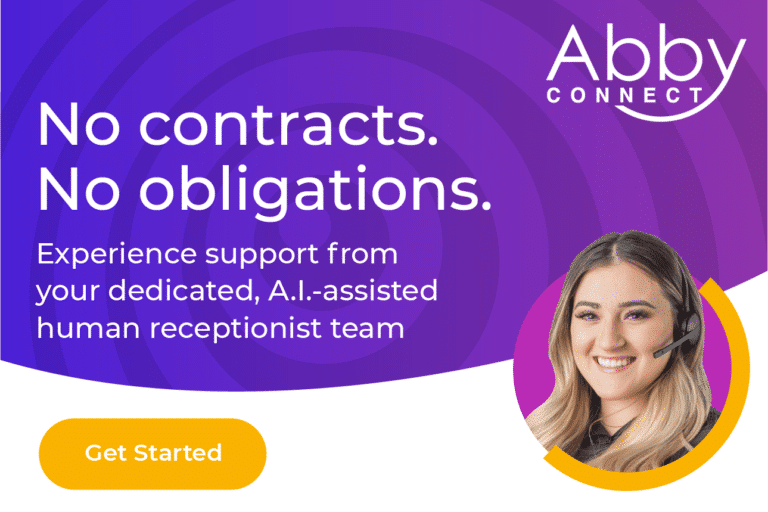Email is dead.
Okay, maybe not. But inboxes are overflowing! Thousands of emails are lost or simply deleted every single day. Sure, emails are fast and easy. However, they come in by the hundreds (or thousands), and most of them get ignored, lost, or flagged for another day–never to be revisited.
For a long time, we thought the phone call was out. It’s been around for a LONG time, it’s more expensive, it’s time consuming… that said, you can’t deny the impact. It might not be right for everything, but the phone call certainly has its place (and it’s a powerful one).
Email versus the phone: There are advantages and disadvantages to both–and they should both be used strategically.
In this blog we’ll summarize the debate and explore:
- The pros and cons of the email and the phone call
- The best and worst-case scenarios for each
- The overall implications for customer service
We will answer the question: phone vs. email for business communication and sales – which is better?
The Pros and Cons of Phone Calls and Emails
How you communicate matters, and so does the channel. Like most things, each communication channel comes with advantages and disadvantages you’ll want to consider.
Email pros:
- Fast and efficient to send
- Cheap
- Easy to automate
- Leaves a digital trail for future reference
- Effective for follow-up from other conversations
- Effective for ongoing status updates
Email cons:
- Much easier to ignore or forget about than a phone call
- Less direct and personal than a phone call
- Competes for attention with an entire inbox that may receive dozens of emails a day
- Has the capacity to overwhelm or irritate recipients when they receive multiple emails
- An email is inherently delayed since it takes time to receive, read, and send emails
- Can be more time consuming if back-and-forth communications are necessary
- Lacks nuance and is more prone to misinterpretation with writing representing only 7% of all communication
A call, on the other hand, is more work but generally more effective.
Phone call pros:
- More direct and personal
- Offers the ability for the caller to use tone to convey enthusiasm or a heartfelt apology
- Requires the recipient’s full attention
- More efficient than back-and-forth emails
- Effective for explaining complex ideas and capturing nuance
- More effective for urgent issues
- Harder to ignore
- Increases overall communication by 38%
Phone call cons:
- More expensive and time-consuming than email
- Doesn’t leave an automatic record of what was discussed
- Can disrupt workflow
- When not handled professionally, can significantly negatively impact customer satisfaction and brand reputation
- Is still missing 55% of nonverbal communication
In 2021, researchers Amit Kumar and Nicholas Epley found that voice-based interactions like talking on the telephone, conversing with voice recordings, and live video chatting created stronger social bonds than digital interactions initiated and managed through email or text messages.
A phone call is a direct one-to-one interaction, which becomes more valuable as digital interactions multiply. You can receive a Twitter mention, a dozen emails, a couple texts, and a message on Instagram in the time it takes to make one phone call. But what interaction are you likely to remember? The direct connection facilitated by the phone call translates into a meaningful interaction and increases the possibility of a long-standing relationship. This direct connection creates the opportunity to convert a cold lead into a warm lead and, potentially, creates the space for a purchase to be made (and revenue to be generated).
Think of it this way: You’re much more likely to make a purchase with someone whose name you know, walking you through the process, than you are to click a link in an email.
Phone vs. Email: When to Pick Up or Type it Up?
Type It
Email is the go-to medium for follow-ups, sending links or documents, quick fact-based communications that don’t require extensive explanation, and one-off communications. The rule of thumb is if it’s quick, easy, requires documentation, and/or doesn’t require a long conversation: email works well.
But remember your customers are receiving dozens of emails a day and the average open rate is only 20-40%. If it’s really important, it might be worth an email + a phone call.
Pick up the Phone
The phone is the best medium to make direct personal connections, have sales conversations, facilitate a discussion, answer complex or customer-specific questions, and manage upset customers. If it requires a back-and-forth conversation or it’ll be helpful for a customer to hear voice and tone, a phone call is a clear winner.
Do Both
Of course, both a phone call and an email have their place–so it makes sense that sometimes you should use both mediums.
For example: say you’re working through a complex issue with a customer. You talk on the phone and solve the issue together. In order to keep a record and keep the customer informed, it makes sense to follow up with an email summary of what happened. You could even call or email them in a week or two to ensure their problem is really solved.
Another example: you’re selling software to a large department with several key stakeholders. You have a call with your main point of contact to present your sales deck and talk through the details. It will likely make sense, after the phone call, to send an email to ensure the whole group of stakeholders are kept informed. You can send them an email with the deck and an outline of what was discussed.
There are literally thousands of potential configurations of your communications. Building out standard flows (with flexibility built right in as things develop) will help you utilize the best of both channels, while limiting the impact of their weaknesses.
Unhappy Customer: When a Phone Call Is the Best Thing You Can Do!
When it comes to heightened emotions or a misunderstanding that has blown up, a telephone call is the best thing you can do (regardless of whether email is the primary means of communicating with the customer). A direct conversation is the best way to reestablish trust. Everyone wants to feel heard and understood. An angry customer needs to hear that you care about their experience and you are willing to take the time to make it right. They need to have their problems solved efficiently, and, even after a bad experience, get that direct, personal touch.
When feelings are involved, a direct call is always best to avoid long-term ill will, a customer leaving, or a bad review.
When it’s emotional, it’s personal and a phone call is best.
Time Management and Customer Relations
Okay so, generally speaking, phone calls create a better experience and connection with a customer. But what about when you’re receiving, not making those phone calls.
Building those relationships means meeting your customers on the channel of their choice–but answering your own phone could be hurting your business. How do you tell the difference between a customer calling, a potential sale, a spammer, and a time waster?
A virtual receptionist service will help! With Abby Connect you get a dedicated team of 5-10 receptionists who answer, transfer, provide FAQs, do intake, and even schedule appointments. They’ll transfer the callers you want to talk to, and filter out the ones you don’t! You get to protect your productive time, while still making the right connections with your customers.
Your dedicated team will get to know your business and your customers–helping you make connections and delight your audience. With custom greetings, intake, call routing, and FAQs, your team will sound like they’re sitting in your office.
Experience the Abby difference for yourself!






